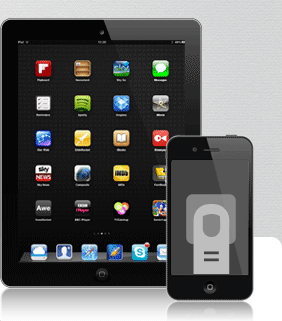After some classic, boring corporate announcements from IBM and Apple, it is time to have a look at the first results of their partnership.
This was announced last July, a mid-summer period when nothing normally happens in enterprises, and both of the press releases from IBM and Apple were perfect examples of how words can send you to sleep quicker than a drug containing benzodiazepines.
If this kind of message is very common from IBM, everyone – from journalists to Apple’s fans – were more surprised by Apple’s use of sentences, like “landmark partnership”, “new level of efficiency, effectiveness and customer satisfaction” and “radical step for enterprises”.
This is particularly true for Apple, as they have often been unsuccessful in addressing the enterprise market over the years. Initiatives like servers, such as Workgroup in 1993 and Xserve in 2004, and Xserve RAID failed miserably, to name but a few.
IBM has also had its failures while attempting to talk directly to end-users or consumer market. This probably started with OS/2, PCjr (you probably don’t remember that one!), the Simon smartphone (don’t laugh, that was in 1992) and ThinkPad, before finally ending with the sale of the PC division to Lenovo in 2004.
So, theoretically, these folks work in very different ways, but they are very complementary within their respective fields of expertise, and that is exactly what the deal intended to achieve: to bring the best from everyone in order to address industry specific requirements.
But everybody knows how hard it is to marry or have a partner with very different views on things. Imagine trying to mix the sex appeal of Marilyn Monroe with the thoughts of Stephen Hawking, or the soul of a Ferrari with the box style of a SsangYong. Those are hard to mix, but this is exactly what the partnership is all about, bringing the best out of the two organizations in order to – let me quote the PR – “transform the way people work, industries operate and companies perform”.
I was definitely skeptical at first and time passed. As promised in July, another IBM and Apple PR was issued in early December, announcing the 10 first apps related to this partnership, but went mostly unnoticed. Both companies set up webpages (IBM and Apple) that are different but look nice – flat design and clear messages were obviously the drivers here – but what about the apps?
The apps are related to six main industries: Banking and Financial Markets, Travel and Transportation, Retail, Insurance, Telco and Government. They look very much like any good app: intuitive, minimalist, with a clear interface. They are also, needless to say, very well designed.
At this stage, what impresses me most is the fact that the duo came out with an interface that was clearly inspired by Apple. They have always been known to make very simple software and hardware; they even got criticized for being too minimalistic, and I agree that in, some cases, this is true. On the other hand, IBM had just the opposite reputation of being too heavy, too much, too complicated and a classic example of featuritis!
The result, with the 10 first apps, is a perfect reflection of what has made apps so successful for the past 8 years (iPhone was introduced in January 2007). In other words, Apple clearly offers expertise with UI/UX and provides a strong and mature existing hardware platform (since 2007, Apple sold 800 million iOS worldwide). On the other hand, IBM is a major player on the enterprise market, with business services from hardware to software.
That said, besides looking nice, every app has its own purpose: to boost sales, add value, develop customer retention, increase customer service, etc. From Passenger+ to Retention, all these apps have their own style and are adapted to enterprises’ requirements. It doesn’t end here. By the end of 2015, the duo has promised to deliver some 90 additional apps!
Now, you might not be an enterprise that relies on IBM infrastructures and services, but you enjoy your mobile devices. Isn’t it time to empower your employees or partners with additional functionalities or services in order to increase your sales, better inform customers, provide additional services, share strategic information and embrace the mobile era?
If the answer is yes, we are here to help you in your transition to this era.

















